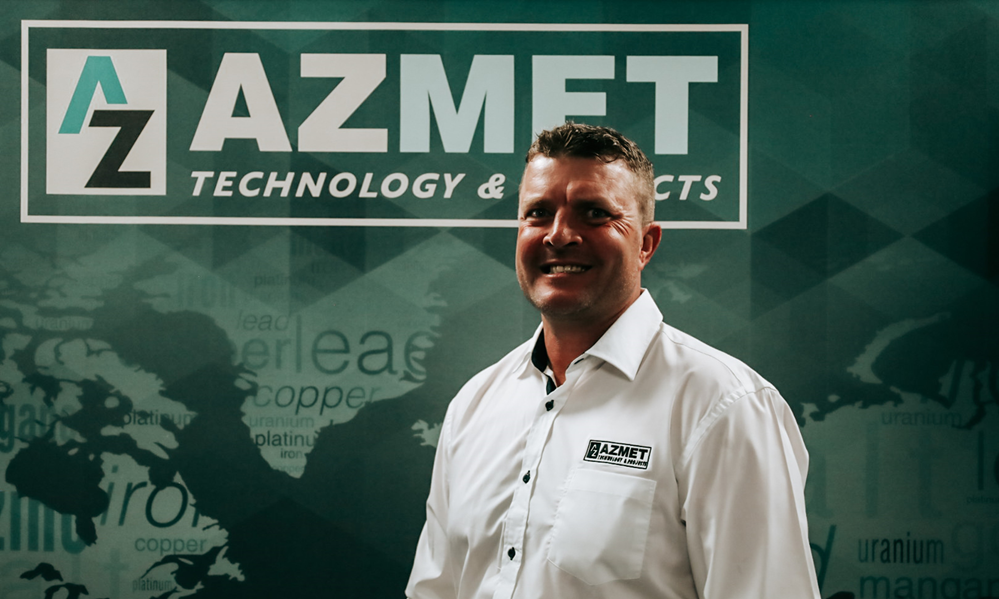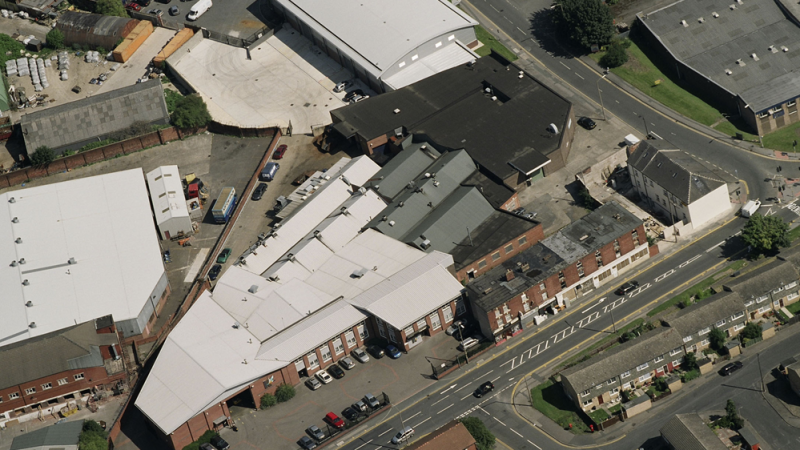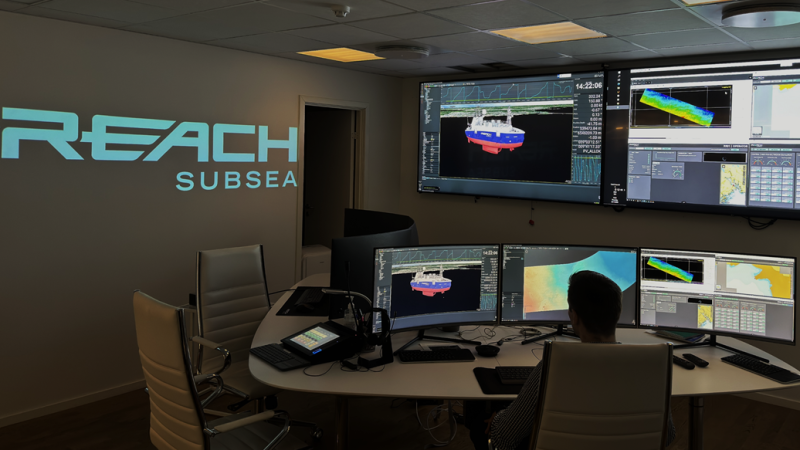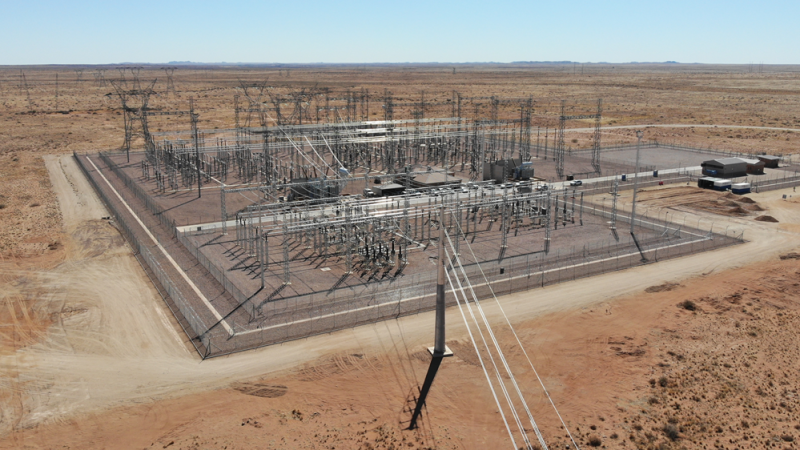In the ever-evolving mining sector, the pressure to improve efficiency, reduce operational costs, and prioritize environmental sustainability is driving technological innovation. One company at the forefront of the industry is AZMET Technology & Projects, a multi-disciplined engineering company which specialises in value-added intellectual property products and advanced process technologies.
“Starting as an EPCM (Engineering, Procurement, & Construction Management) consultancy firm, over the last decade AZMET has shifted towards the development and implementation of proprietary and value-added products and technologies. This has been a significant change. We now own and have developed our in-house proprietary products, including our flagship product, modular Desorption and Recovery Plants,” says AZMET Marketing Director, Ruan Kukard.
He points out that with over seventy years of combined exco members’ experience in designing gold metallurgy plants, AZMET has operated primarily in the international market. An estimated 99% of its projects have been conducted outside South Africa, spanning more than 25 countries worldwide. This extensive global reach has provided the company with a wealth of experience, reinforcing its position as a leader in gold processing technology.
Strategic Partnership
To expand its global footprint, AZMET has signed an agreement with AZTEC Mining, a specialist in developing cutting-edge solutions that enhance gold and other precious metal recovery while reducing environmental impact. This collaboration grants AZMET marketing rights for AZTEC’s patented products and technologies, and holds the promise of being a “game changer” for gold mining operations worldwide.
“Mauritius-based AZTEC Mining is an innovation-driven entity, investing heavily in the development of new products and technologies that increase gold yield while reducing operational costs,” explains Kukard. “Moreover, AZTEC Mining focuses on environmentally conscious solutions, particularly on mitigating the impact of gold mine tailings that contain cyanide. Their innovations align with the aim to assist operational mines to comply with International Cyanide Management Institute’s guidelines, for ensuring sustainable mining practices.”
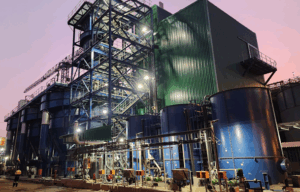
He affirms that the two companies share common values and a vision for the future of gold mining. “The agreement with AZTEC Mining is a natural fit. For AZMET, this collaboration offers the opportunity to market state-of-the-art gold recovery products and technologies, while AZTEC benefits from AZMET’s extensive experience and global network, combining cutting-edge technologies with expert implementation support and optimal performance in real-world conditions.”
“However, this agreement isn’t just about introducing new technologies to the market,” Kukard further affirms. “It’s also about providing a comprehensive, turnkey solution from test work, design and implementation through to optimization and support. Together, AZTEC and AZMET are positioning themselves as industry leaders committed to driving positive change, through innovative products and technologies.”
The AZTEC Upflow Reactor
At the core of AZTEC’s innovations is the patented AZTEC Upflow Reactor (AZ-UFR), a specialized counter-current flow reactor engineered to enhance the kinetics and ion transfer between solids in slurries, activated carbon and solutions.
The Upflow Reactor is a ground-breaking technology, designed to be installed at the back end of operational gold plants, and consisting of four to six reactors that recover additional gold from tailings—waste material typically considered lost by mining operations.
“Beyond gold recovery, the Upflow Reactor significantly reduces cyanide levels in tailings by up to 50%. This reduction translates to massive cost savings for mining companies, as cyanide detoxification agents are costly operating expenses in gold processing,” says Kukard.
“Additionally, lowering cyanide levels aligns with international environmental regulations, making this technology not only economically beneficial but also crucial for sustainability. So, it’s got an upside with regard to increased yield as well as environmental sustainability benefits. By ensuring safer disposal of tailings, this technology minimizes environmental hazards and enhances the safety of surrounding communities.”
He further notes that the first operational Upflow Reactor unit was installed for Barrick Gold Corporation, a significant milestone that has drawn the attention of other major gold producers. Currently, three additional large-scale mining companies are engaged in test work for potential implementation.
“One of the key strengths of this technology is its scalability—unlike conventional methods that require a transition from lab-scale to pilot testing before full-scale implementation, the Upflow Reactor allows for direct execution from lab test results, ensuring quicker deployment and return on investment.”
Unique Value Proposition
Despite its advantages, the adoption of new technology in the gold industry remains a challenge. “Even with favourable gold prices, operational mines are often hesitant to integrate innovative solutions due to perceived risks and high capital costs. However, the AZTEC Upflow Reactor boasts an extremely high return on investment (ROI), with payback periods estimated at 12-24 months—a compelling proposition for mining companies looking to optimize profitability.”
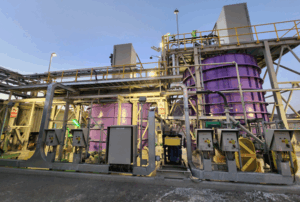
“As such, the reactor presents a unique value proposition. Given that as-arising tailings are typically discarded, repurposing them into an additional revenue stream—generating extra thousands of ounces of gold annually—makes for an attractive investment,” Kukard points out. “Furthermore, the technology costs of implementing the technology are typically lower than current all-in sustainable costs, creating a win-win situation for all stakeholders.”
“All indications show that there is an appetite for this technology. From an economic perspective, the additional gold recovery facilitated by this innovation provides mining companies with greater financial resources to invest in community development projects, infrastructure, and sustainable practices.”
“The short retention time of the AZTEC Upflow Reactor (one-tenth of conventional carbon-in-leach operations) further reduces the footprint and costs of AZ-UFR processing plants, making it an attractive choice for companies looking to balance sustainability with profitability.”
Golden Prospects
Kukard points out that beyond the AZTEC Upflow Reactor, AZTEC Mining is developing additional innovative products such as the AZTEC Carbon Transfer Pump, interchangeable with existing carbon transfer pumps. Carbon attrition—gold loss due to breakage—has been a persistent issue in the industry, and AZTEC Mining’s solution is expected to enhance operational efficiency significantly.
The first demo unit of the AZTEC Carbon Plant Transfer Pump is set for installation in a South African gold mining operation by the end of the second quarter, 2025. Initial test results indicate superior performance, making it another promising addition to AZMET and AZTEC Mining’s portfolio.
It may well be said that the partnership between AZMET and AZTEC marks the beginning of a new era in mining technology. This collaboration is poised to help mining operations reduce costs, improve recovery rates, and meet sustainability goals. As the demand for sustainable and efficient mining practices grows, the two companies are setting new industry benchmarks that will shape the future of gold processing for years to come.
